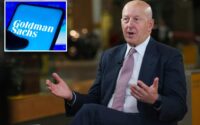The inflation tide has turned — no thanks to the Fed
Abundant emerging signs show that the inflation war is won — no thanks to the Fed.
The Federal Reserve rate-hike fixation will run wild on Wednesday, with tongues wagging over what they do and say. That likely stokes short-term volatility — up, down or both. But the fact is, their words are pretty much worthless.
In May, Fed Chairman Jay Powell said, “a 75-basis-point increase is not something that the Committee is actively considering.” They hiked that much in each of their next four meetings. In July, he disdained “forward guidance” — yet Fed officials keep jawboning openly.
Ignore the Fed fixation. They don’t know what they will do. How could you?
Instead, think input costs. First, let me note that “winning” doesn’t mean returning to pre-2022 consumer prices. That would require deflation from here — consumer prices widely falling. We don’t do that. Ever. “Winning” means inflation slowing to past, tolerable levels.
Indications of that — yet to show in stores — abound. Seeing them means fixating on the input costs that competitive commerce turns into final consumer prices.
Take crude oil’s price, an obviously important input. It surged after Russia invaded Ukraine. But after March’s peak, supply channels shifted, production grew and oil prices slowly stumbled — now off 42% to December 2021 levels. Energy helped drive a spike in consumer prices, but will now nudge us toward stability.

COVID-era supply chain snafus are abating everywhere. Shanghai freight rates fell 77% from January’s high. America’s logistics managers’ index revealed transportation prices contracting while capacity remains ample.
Recall that used car prices soared earlier this year as chip shortages stalled new car output. But Manheim’s wholesale used car price index is now down 15.6% from January’s record to August 2021 levels. Dealer prices don’t show progress yet. They will.
Food? The Ukraine invasion fueled shortage fears, spiking global prices. Now wheat prices are half March’s highs. November’s UN World Food Price Index rose just 0.3% year-over-year, erasing 2022’s spike.


Housing is CPI’s biggest component. You know home price gains are cooling. You may not know home prices lead rents by roughly 15 months. Zillow’s data show sharply slowing rent increases. More soon.
Some say spiking government spending drove inflation. Maybe. In the 12 months through October, Uncle Sam spent $5.76 trillion. Huge, but 24% below February 2021’s $7.62 trillion high.
Many claim excess money supply growth causes inflation. I’m sympathetic. But note: US M4 — the broadest measure of that, including currency, deposit accounts, money funds and cash-like securities — grew 30.8% year-over-year in June 2020. Now it’s 0.1%.
Others fret that tight labor markets are propelling inflation. Wrong. Nobel laureate Milton Friedman long ago proved wages follow prices — always — not the reverse. Regardless, payroll gains have slowed significantly.
These improvements largely stem from supply catching up after COVID-era disruptions. They aren’t signs the Fed is succeeding.

Monetary policy hits the economy later by affecting lending via nudging banks’ overnight borrowing costs. Banks borrow short-term funds to finance longer-term loans. Fed hikes theoretically make banks’ overnight funding costlier, reducing profitability and volume, slowing the economy.
Not now. Despite the Fed’s hikes, lending accelerated from May’s 5.8% year-over-year to 12.0% now. Why? Banks needn’t borrow overnight reserves. They’re hugely awash in near zero-cost deposits that don’t wiggle with rate hikes. Higher long-term rates make lending more profitable, so more happens.
What the Fed does now, despite the hysteria, mostly just hurts mortgage borrowers, home buyers. But inflation’s input costs, as shown, were improving months before the Fed started going gonzo in June.
We’re like a snake that ate a huge inflation rodent, bulging in the middle. But it passes very soon — unless we eat more.
Ken Fisher is the Founder and Executive Chairman of Fisher Investments, four times New York Times bestselling author, and regular columnist in 17 countries globally.


